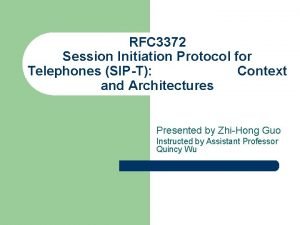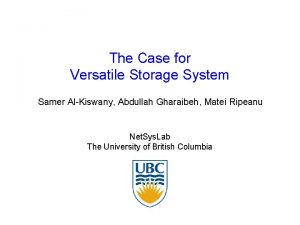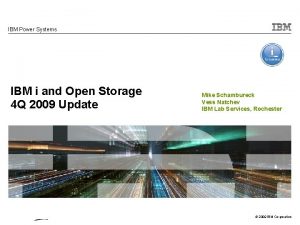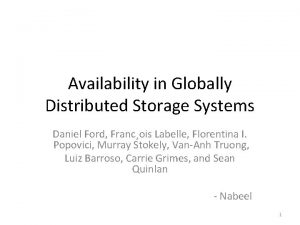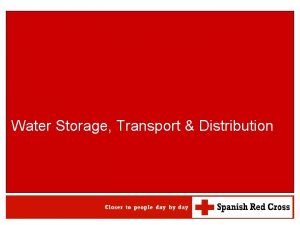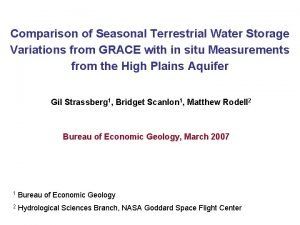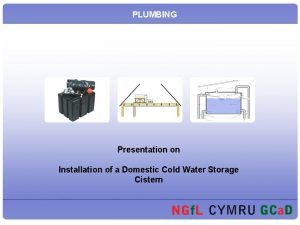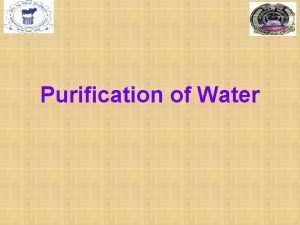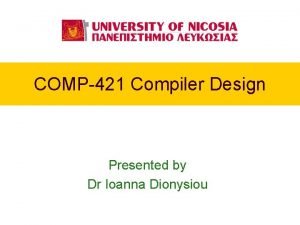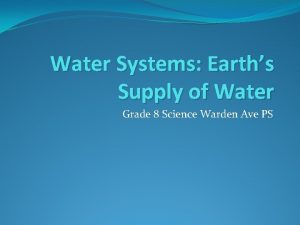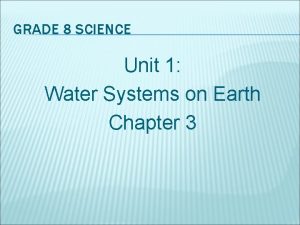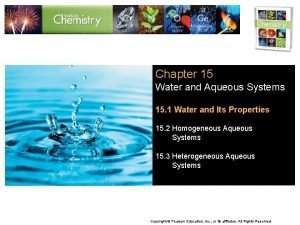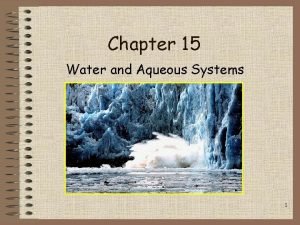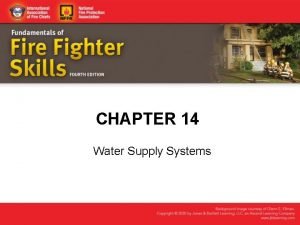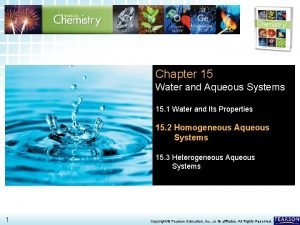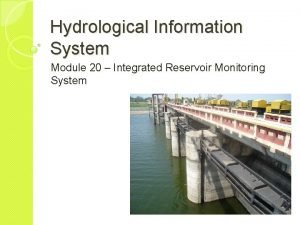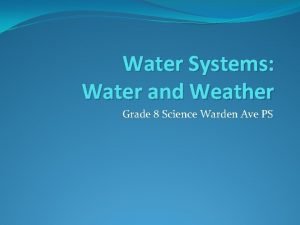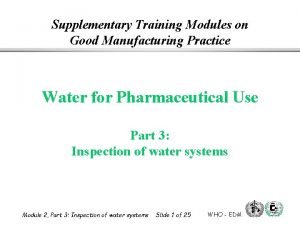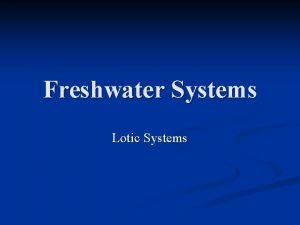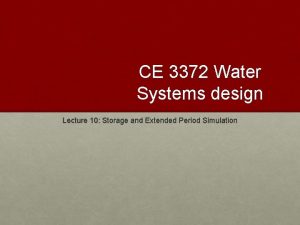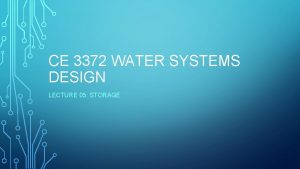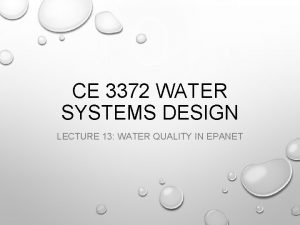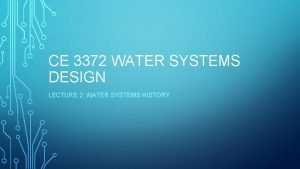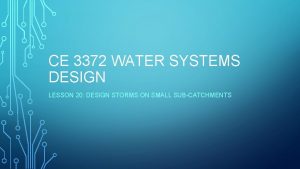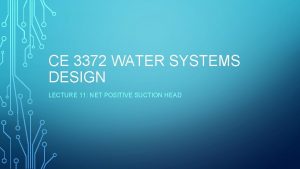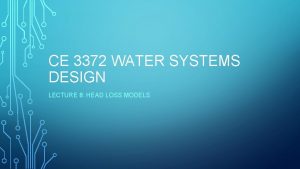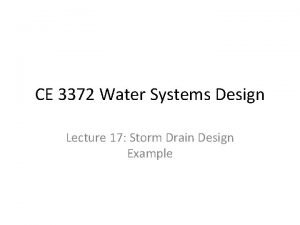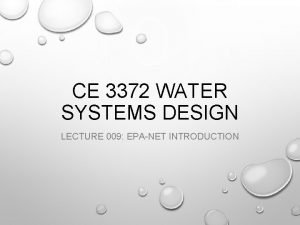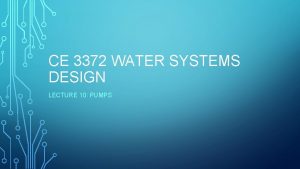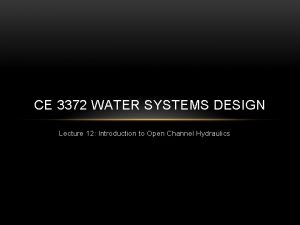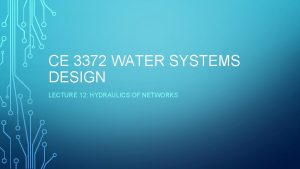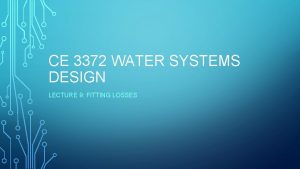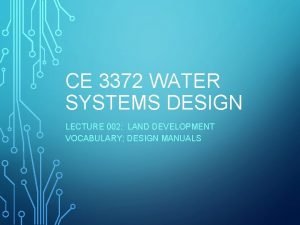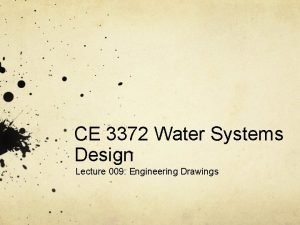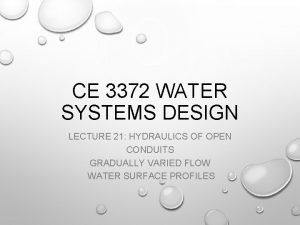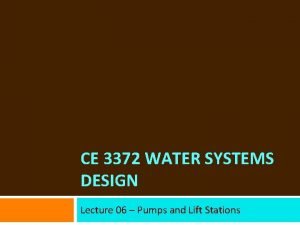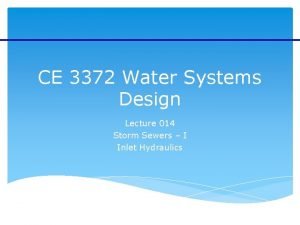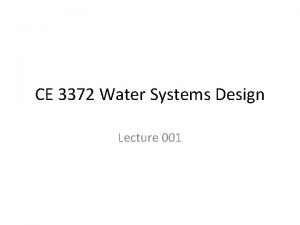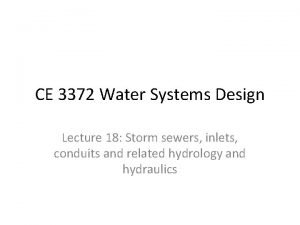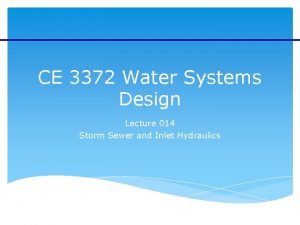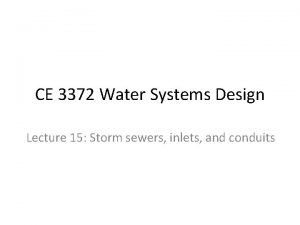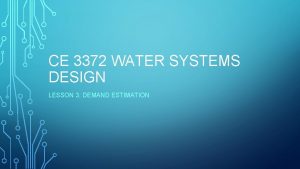CE 3372 Water Systems design Lecture 12 Storage










































- Slides: 42

CE 3372 Water Systems design Lecture 12: Storage and Extended Period Simulation

Overview • Storage Concepts • Flow equalization • EPANET Tank Model(s) • Single period simulation • But multiple period simulation -- interesting • Multiple Period Simulation • Reasons • Multiplier Table

Storage • Storage is used in water supply, storm water management, and wastewater systems for a variety of reasons. • One primary reason is flow equalization — generally things are designed for a particular steady flow rate and storage can be used to accommodate variable flow rates in a system. • Storage is either elevated (above grade), at grade (reservoir, tanks, ponds, etc. ) or below grade (subsurface vaults — NOT AQUIFERS).

Storage Compartments • Fire storage • Flow-equalization storage • Emergency storage Fire Flow Equalization Emergency

Fire storage • Fire storage is sufficient storage to allow the system to meet routine uses plus substantial fire flow. • The desirable volume is based on expected fire flow rates multiplied by the required fire flow duration.

Flow-equalization • Flow-equalization storage is sufficient storage to account for peak demands in the system without having to exceed supply capacity. • A desirable volume is 1 -2 days of average daily demand.

emergency storage • Emergency storage to allow the system to operate without external supply sources for a period of time to allow for repairs or other unusual circumstances. • Without emergency storage, every upset will lead to a ”boilwater” order or substantial interruption of service — these kinds of interruptions should be rare if the system is well engineered. • A desirable volume is 1 -2 days of average daily demand.

How much? • Engineering would tend to choose for the larger volumes • Economics will argue for the smaller volumes • The engineer will have to balance these competing choices in a design.

Residence time • Additionally, residence times in any storage reservoir for TREATED water should not exceed a reasonable amount disinfection residual contact time. • For chlorine/chloramine disinfection this time is on the order of 6 -10 days • An hydraulic retention time of any such reservoir should be no longer than 8 days (as a reasonable rule of thumb).

Hydraulic Retention Time • Hydraulic retention time is the ratio of storage volume to average discharge through the reservoir

How much? Flow Equalization • Operating (flow-equalization) storage is determined as follows: 1. Determine the hourly demand for a typical design day. 2. Compute the cumulative draft (cumulative volume as a function of time) 3. Compute the average constant draft rate (flow rate that if applied over the day end at the same accumulated value) 4. The equalization storage is the sum of the two largest deviations from the average flow line to the cumulative draft line.

Flow Equalization Storage • Demand pattern from historical data appropriate to the service area.

Flow Equalization Storage • Accumulate the demand

Flow Equalization Storage • Average constant draft

Flow Equalization Storage • Sum the 2 largest deviations V 2 • Storage required V 1+V 2 • In this chart, about 25000 volume units. V 1

Flow Equalization • The engineer needs to decide which demand to use: • Daily • Peak • These volumes are added to that needed for emergency and fire flow. • Determines the tank volume required • Tank type (elevated, at-grade, buried) determines shape – elevation, diameter, min-level, max-level. • Elevated tanks have substantial structural considerations

Typical installation

Storm Water Storage • Used to mitigate peak flows from development. • Provide water quality benefit. • Develop a water resource (rainwater harvesting)

Underground “tank” • More than a hole in the ground • Needs structure to support surface loads • Needs a way to drain completely (usually a pump)

Readings • EPA NET User Manual – how to model storage tanks in a water distribution system. • Interesting web-resources • http: //www. invisiblestructures. com/rainstore 3. html • http: //www. upout. com/blog/san-francisco-3/heres-what-itlooks-like-under-those-brick-circles-in-the-street

Problem Statement

Tank • Supply reservoir (or tank); identify reservoir pool elevation • May need assumptions • Tank dimensions should be sensible • Pipe length is given Diameter Max Level Min Level Z=315 ft Z=300 ft L 2=120 ft Node 2 Pipe 8: L 1 + L 2 = 300 ft L 1=180 ft Elevation Z=180 ft

Extended period simulation • EPANET and similar programs find steady-flow solutions • Extended period simulation produces a sequence of steady states with approximations for: • Tanks drain and fill • Pressures can change at beginning and end of a time interval • Pump operating points moving along a pump curve

Uses • Extended period simulation used for: • Modeling pressure in systems during changing demand –usually at hourly time scale • Storage tank operation and sizing • Water quality simulation • EPANET can approximate water quality from multiple sources – has uses in • Water age in system • Detection of intrusions into a system • Severity of contamination (impact assessment)

How implemented? • In EPANET assign a demand pattern to a node • Set simulation times • Program then follows the pattern

Illustrate by example

Illustrate by example

Illustrate by example

Illustrate by example

Illustrate by example • Build network layout • Nodes (junctions, tanks, reservoirs) • Links (pipes, pumps, valves) • Add pump curves • BROWSER/DATA/CURVES/ADD (TYPE=PUMP) • Add storage curves • BROWSER/DATA/CURVES/ADD (TYPE=STORAGE) • Add demand pattern(s) • BROWSER/PATTERNS/ADD

Illustrate by example

Illustrate by example

Illustrate by example

Illustrate by example

Illustrate by example

Report output

Report output

Report output

Report output

Report output

Report output

Next time • Water Quality in EPANET
 Proxyvo
Proxyvo Water and water and water water
Water and water and water water 01:640:244 lecture notes - lecture 15: plat, idah, farad
01:640:244 lecture notes - lecture 15: plat, idah, farad Primary storage vs secondary storage
Primary storage vs secondary storage Secondary storage vs primary storage
Secondary storage vs primary storage Secondary storage provides temporary or volatile storage
Secondary storage provides temporary or volatile storage Object based and unified storage
Object based and unified storage Operating system lecture notes
Operating system lecture notes Lecture sound systems
Lecture sound systems Lecture sound systems
Lecture sound systems Versatile storage systems
Versatile storage systems Storage for ibm power systems
Storage for ibm power systems Tactical storage systems
Tactical storage systems Tactical storage systems
Tactical storage systems Availability in globally distributed storage systems
Availability in globally distributed storage systems Water storage on earth
Water storage on earth Water storage
Water storage Cold water storage cistern diagram
Cold water storage cistern diagram Double pot method of water purification
Double pot method of water purification Reinforcement lap lengths eurocodes
Reinforcement lap lengths eurocodes Elemen urban design
Elemen urban design Principles of design in interior design ppt
Principles of design in interior design ppt Lecture hall acoustics
Lecture hall acoustics Game design lecture
Game design lecture Computer aided drug design lecture notes
Computer aided drug design lecture notes Cmos vlsi design lecture notes
Cmos vlsi design lecture notes Activation record in compiler design
Activation record in compiler design Decision support systems and intelligent systems
Decision support systems and intelligent systems Engineering elegant systems: theory of systems engineering
Engineering elegant systems: theory of systems engineering Embedded systems vs cyber physical systems
Embedded systems vs cyber physical systems Engineering elegant systems: theory of systems engineering
Engineering elegant systems: theory of systems engineering Water systems grade 8
Water systems grade 8 Wells water systems recently reported
Wells water systems recently reported Grade 8 science water systems quiz
Grade 8 science water systems quiz Water and aqueous systems chapter 15 answers
Water and aqueous systems chapter 15 answers Chapter 15 water and aqueous systems
Chapter 15 water and aqueous systems Chapter 14 water supply systems
Chapter 14 water supply systems Homogeneous aqueous systems
Homogeneous aqueous systems Reservoir storage monitoring system
Reservoir storage monitoring system Grade 8 science water systems
Grade 8 science water systems Validation of water systems for pharmaceutical use
Validation of water systems for pharmaceutical use Advantage of direct cold water system
Advantage of direct cold water system Lotic water system
Lotic water system
